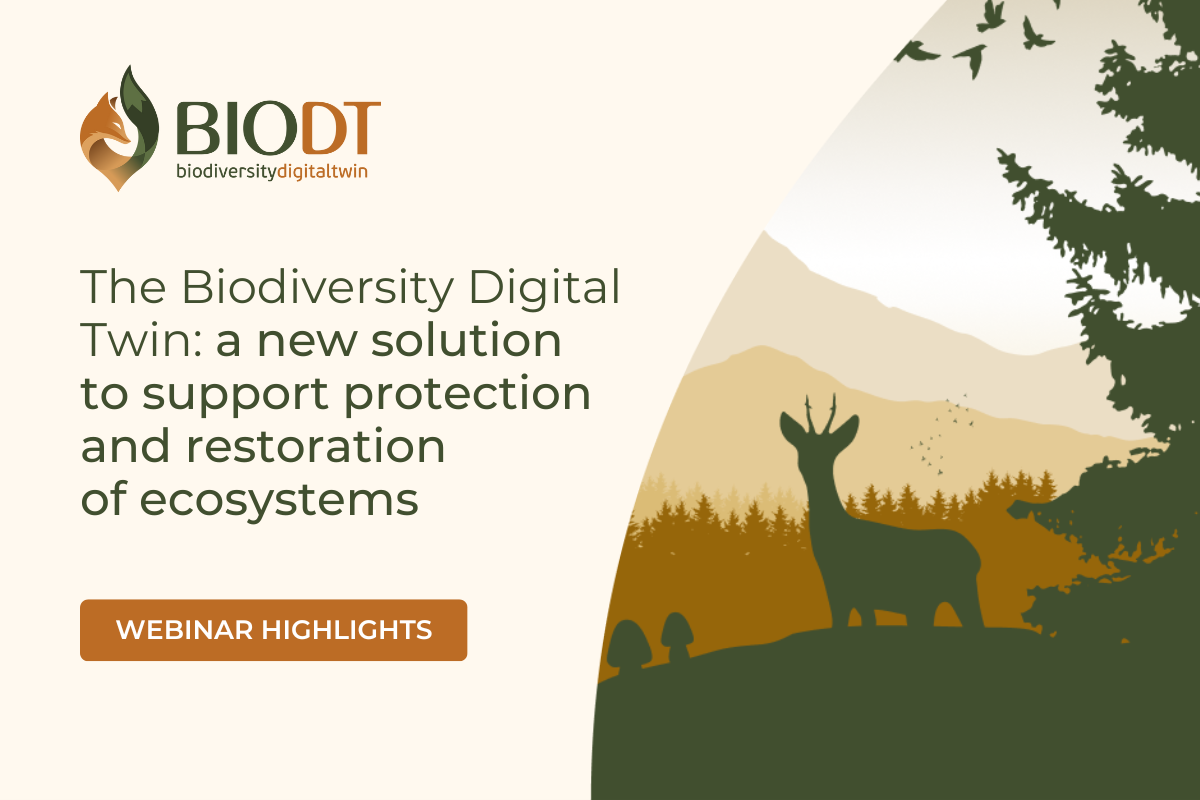
Setting the scene: BioDT in the European biodiversity landscape
The BioDT project aims to bring together a dynamic team of experts in biodiversity, High-Performance Computing, Artificial Intelligence, digital twinning and FAIR data to develop a Biodiversity Digital Twin prototype to push the current boundaries of predictive understanding of biodiversity dynamics. In order to present the work BioDT is bringing forward, the project team has organised its 1st webinar on 13 July 2022, with the aim of showing the project's objectives and goals, and its interaction with the LUMI Supercomputer, fundamental for building its modelling and simulation capabilities.
BioDT: a Digital Twin for advanced simulation, modelling and simulation capabilities
The webinar was opened by Jesse Harrison, BioDT Project Manager and Senior Data Scientist at CSC, who started his presentation by explaining what the Digital Twin is and how it is essential to model specific aspects of nature. He continued his speech by showing the project's objectives, its use cases connected to Species response to environmental change, Genetically detected biodiversity, Dynamics and threats from and for species of policy concern, and Species interactions with each other and with humans. Jesse concluded his presentation by explaining the benefits brought by the BioDT infrastructure and the overall initiative. [The full presentation is available here].
High-Performance Computing as a means to support the Digital Twin: the Lumi Supercomputer
Aleksi Kallio, BioDT Digital Twin Technical Platform Leader and Development Manager at CSC, followed the presentation by explaining how the team is going to set up, develop and operate the advanced technical platform required by the digital twins; provide world-class HPC resources from the LUMI Supercomputer; ensure portability of digital twins across HPC sites and cloud environments; and maintain a service catalogue of shared services for integration with EOSC Core services. [The full presentation is available here].
Interactive session with the audience
The webinar attracted a total of 122 participants, from 25 countries.
During the event, a series of questions were addressed to the audience to understand their familiarity with the biodiversity and digital twins fields. The following graphs show the main findings and takeaways from the surveys:
Panel discussion: Biodiversity in the context of climate change and digital twins: challenges and opportunities
The webinar was followed by an interesting panel discussion, moderated by Jeroen Broekhuijsen, BioDT Collaboration with strategic initiatives Leader and Team Lead Digital Twin at TNO, that brought together Rita Bastos, Postdoctoral Researcher at CIBIO, Yvan le Bras, Chief Technical Officer at PNDB, Sara Garavelli, EOSC Association Director and Thomas Geenen, Technology Partnership Leader at Destination Earth.
During the session, the participants got the opportunity to hear more about challenges, opportunities and strategic goals in the fields of research biodiversity data, digital twins development, High-Performance Computers and collaborations with relevant initiatives, like Destination Earth or EOSC.
In particular, their discussion highlighted that:
- European projects offer unique opportunities to develop simulation models and platforms capable of centralising and storing huge amounts of data, that will ultimately allow the scientific community to integrate more insights into the processes underlying environmental dynamics;
- One of the biggest challenges to overcome to make digital twins platforms work is linked to the need of having open, harmonised and standardised data and putting additional data layers to allow users to interact with the technical models and components;
- Cooperating with international initiatives, like the European Open Science Cloud (EOSC) or Destination Earth, is crucial for the success of the project as it helps to increase data accessibility, make data FAIRer and the BioDT digital twin more robust.
Watch the recording